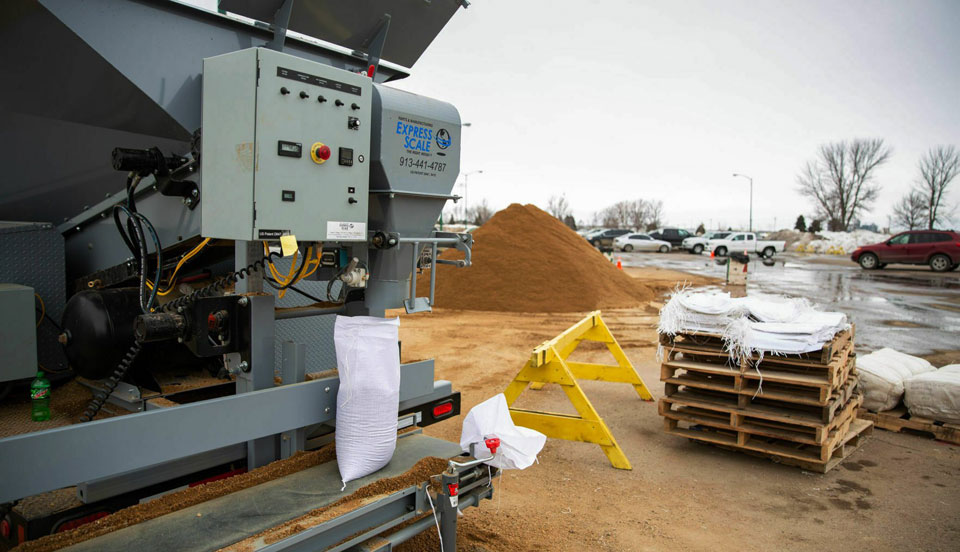
CLARKSVILLE, Mo. (AP) — The window of the Bee Naturals bath-and-body shop offers a view out of a Mark Twain novel: The sprawling Mississippi River at one of its widest points lapping against a small-town Missouri waterfront as barges float by and eagles dart in the air above.
But with a major flood receding and predictions of potentially even worse flooding to come later in the spring, owner Barbara Chappuis is moving her business, abandoning the Clarksville riverfront for higher ground across Highway 79.
“We’re looking at potential historic floods,” Chappuis said. “I can’t risk that.”
Most communities on America’s rivers have some sort of flood protection — usually a concrete wall or an earthen levee. But a few places such as Clarksville do not. They simply cannot afford it, either because Congress will not authorize money or because the local share of the project is more than a small town can pay for. Some communities also struggle with the aesthetics of flood barriers and worry that they will spoil the rustic riverfront streets that are popular with tourists.
Clarksville, a town of 450 people 90 miles north of St. Louis, just endured its seventh major flood in the past decade. Volunteers spent days filling sandbags and building a 4-foot rock-and-sandbag fortress that successfully kept water out of the downtown arts-and-craft shops that operate out of 19th-century brick buildings.
But with snowmelt still coming down from the north and more spring rain expected, the National Weather Service warns that the potential for even worse flooding is high.
Clarksville leaders have long opposed an earthen levee because of how it would change the local scenery.
“If we don’t have the view, we don’t have anything left,” Mayor Jo Anne Smiley said.
That doesn’t mean they don’t want protection. Town officials favor a system that consists of a removable wall with pieces stored inside a pod. When a flood threatens, the interlocking steel and aluminum pieces can be installed in a day. When the water goes down, the wall goes down.
The proposal would cost $4 million. Smiley said the federal government and Missouri would provide $1 million each. The rest of the money is up to Clarksville to find — a tall task for a city with an annual budget of $550,000.
A comparable problem has developed in South Dakota, where the Big Sioux River offers dramatic scenery and abundant recreation for the 22,000 residents of Watertown. But the river is also a curse. Six major floods over the past two decades have cost Watertown millions of dollars. Local leaders want to build a dam upstream that would regulate the river, but Congress will not authorize funding.
“So here we are, we’re in the midst of another flood,” Mayor Sarah Caron said as she took a break from fighting the water. “People have given up, I think. A lot of people think there will never be a flood-control project for Watertown. So we’ll just fight it whenever it happens.”
Officials in some small towns believe the government sees them as expendable when it comes to flooding, while hundreds of millions of dollars are spent to protect larger communities.
About 150 miles north of Watertown stand the neighboring communities of Fargo, North Dakota, and Moorhead, Minnesota, which straddle the Red River and together are home to 250,000 people. A $2.8 billion floodwater-diversion project has been in the works there since a record-breaking 2009 flood. The federal government has already dedicated $450 million and promised $300 million more.
Similarly, the Army Corps of Engineers agreed to spend $117 million to fend off future flooding in Cedar Rapids, Iowa’s second-largest city, after a devastating 2008 flood caused $5.4 billion in damage. That money, combined with more than $100 million from the city and $284 million from the state, is funding a host of improvements, including new floodwalls, green space, and upgraded pumps.
Meanwhile, officials in Hamburg, Iowa, population 1,000, have tried for years to come up with money to restore a levee damaged in the 2011 flood. The money never came, and when massive flooding arrived again in March, the town was swamped. Mayor Cathy Crain said 169 of the town’s 566 homes were underwater. Eighty-eight percent of businesses were damaged.
Crain doesn’t know if a higher levee would have been enough to save the town, but “it sure would have given us a better chance.” The water “would have only overtopped by half a foot. Instead, we had 9 feet.”
The National League of Cities said small flood-prone communities suffered a blow in 2011 when House Republicans banned earmarks, or items placed in spending bills by individual lawmakers for favored projects. That step left communities of all sizes competing for the same federal dollars.
“Metro areas, they have more buildings and infrastructure. Their needs are going to be greater,” said Yucel Ors, the league’s program director of public safety. “With limited resources, it’s hard (for Congress) to find funding for smaller communities.”
Chappuis spent years working as a nurse. The constant hand-washing left her fingers raw, so she developed a product using beeswax to protect her hands. That evolved into a thriving business. In addition to her store in Clarksville, Bee Natural has a store in suburban St. Louis and sells online.
Leaving her riverfront perch inside an 1850-era building that once housed the town bank will be “heartbreaking,” but necessary, she said. Chappuis believes Clarksville has vast potential if only the town can find a way to hold back the Mighty Mississippi.
“There’s just a certain charm here. It’s beautiful,” she said. “And the river is spectacular.”
___
Nicholson reported from Bismarck, North Dakota. Associated Press Writer Scott McFetridge in Des Moines, Iowa, also contributed to this report.











